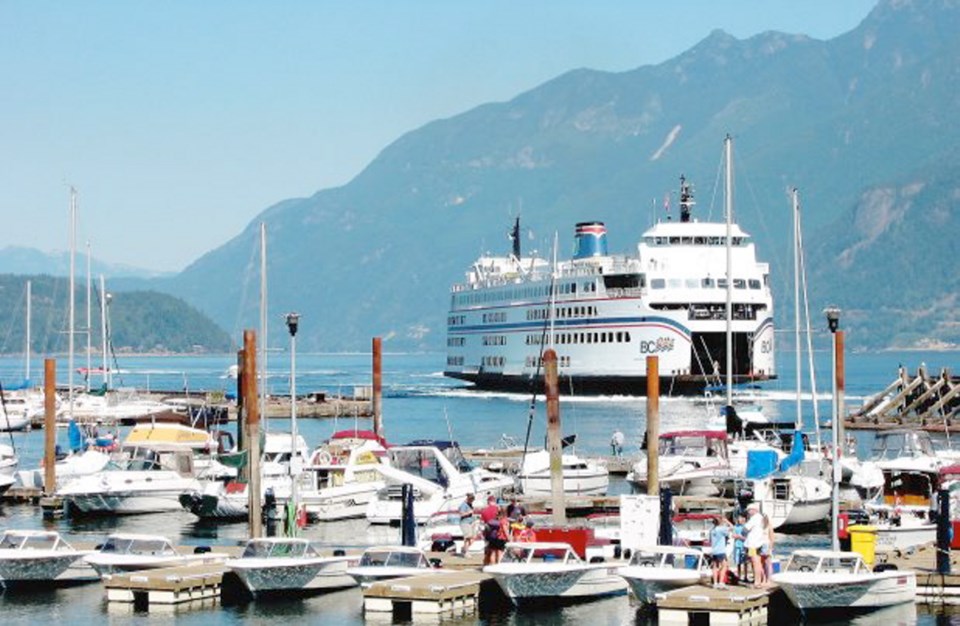Tourism revenue plunged by $3.9 million and passenger loads collapsed by 46 per cent following deep service cuts by the B.C. Ferry Corporation to the provincial government's heavily promoted Discovery Coast Circle Tour through the Chilcotin.
Rubbing salt in the wound, it turns out that service cuts supposed to yield a $725,000 saving actually wound up costing Victoria $870,000 in lost tax revenue under the austerity plan pushed by Transportation and Infrastructure Minister Todd Stone.
An economic analysis to be released today confirms reductions to mid-coast ferry services turned out to cost more than they save — and triggered an immediate implosion of both passenger use and gross tourism revenues on one of British Columbia's marquee routes.
The Discovery Coast Circle Tour was particularly popular with European tourists. They would fly into Vancouver, travel up Vancouver Island, cross the Chilcotin, explore the Cariboo and then return to Vancouver.
About one in five tourism-based businesses in the Coast-Chilcotin region report foreclosure is a near-term possibility.
More than 40 per cent report losing most or all of their tourist bookings when agencies couldn't sell the Discovery Coast package due to worries over ferry service.
And three in four businesses report decreased income in the year after the service cuts, according to the report by Larose Research Strategy.
The study was commissioned by the Cariboo Regional District, the Northern Development Initiative Trust, Community Futures B.C., the West Chilcotin Tourism Association and other local organizations.
This regional recession followed service reductions of up to 90 per cent and replacement of the Queen of Chilliwack with the Nimpkish, a much smaller, slower vessel, on the ferry system's Route 40 linking Port Hardy to Bella Coola, the western terminus of Highway 20 from Williams Lake.
Ostensibly, service cuts announced by Stone in November 2013 would save taxpayers money by reducing service loads and replacing the aging Queen of Chilliwack with the even older and much smaller Nimpkish — it carried only 16 vehicles — a slower, bare-bones vessel offering virtually no tourist amenities. Instead, the analysis found, the program cost the province $145,000 more in lost tax revenue than it yielded in operating expense savings.
Tourism industry experts warned Stone that the Nimpkish could carry only a fraction of the usual summer traffic and lacked basic necessities for a nearly 10-hour trip, like drinking water, a comfortable lounge and a cafeteria.
Stone rode the Nimpkish last summer and gave glowing reviews. The travelling public disagreed — a sign, perhaps, of how out-of-touch the minister is with the marketplace. While Stone enthused over amenities, a survey found that 84 per cent of passengers complained about the lack of comfort and amenities for the length of the journey.
One example cited in the report said: "If you want to destroy tourism in this wonderful area then you are going the right way about it ... the WORST part of our trip to Canada. Not good enough!" The public's assessment of the Nimpkish earned a minus-34 rating on the Net Promoter scale widely used by the international tourist industry to rate services for potential clients. For international travellers, the service was minus-38. The industry average is plus-24. The gap is a whopping 62 points.
Over the past summer, the $3.9-million decline in gross tourism revenues delivered a $1.7-million hit to provincial GDP. Factor in the indirect effects upon business activities supported by tourist travel spending, the study says, and the negative impact on provincial GDP increases to $3.3 million.
Most of that loss occurred in the summer months when tourist activity peaks and revenues are essential in helping small, isolated mid-Coast, Island and Interior community businesses to survive the winters when few travel.
Stone's policy is giving B.C.'s reputation a black eye with international tourism operators, Petrus Rykes of the West Chilcotin Tourism Association has long argued.
The economic study's analysis of satisfaction surveys of passengers travelling on the Nimpkish last summer corroborates Rykes' opinion. "The average visitor satisfaction was low overall," the study concludes.
And it warns that "the generally negative experiences of Nimpkish survey respondents are beginning to appear in user-generated content on major travel review websites."
It says comments emphasize ferry capacity constraints, difficulty booking passage, logistical challenges and safety concerns.



